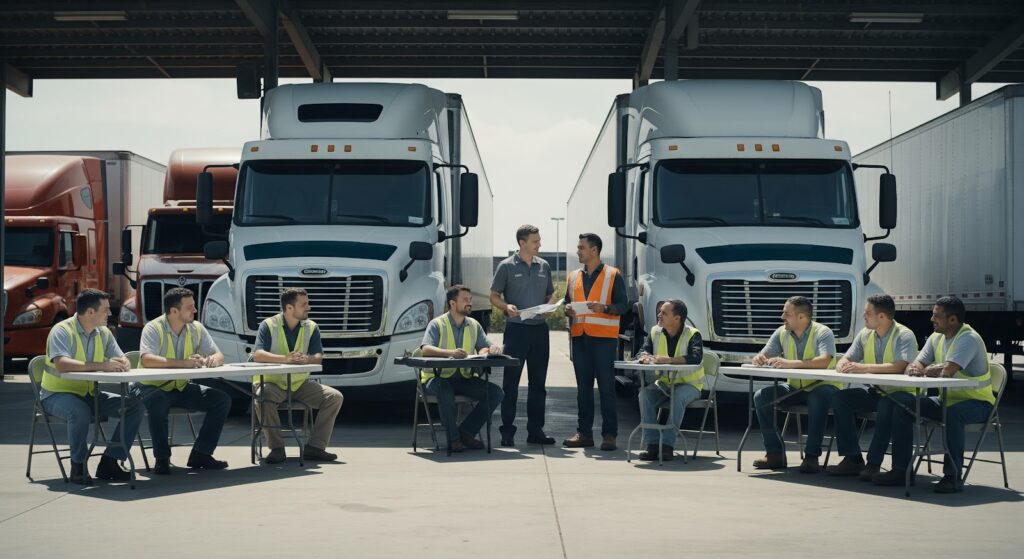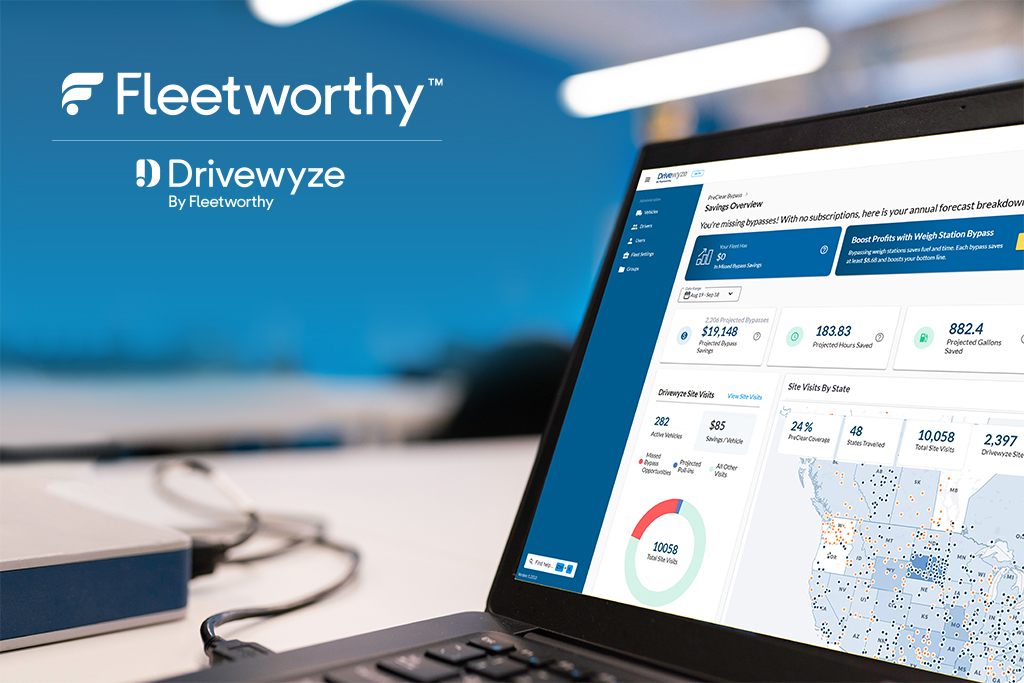Accidents in fleet operations not only jeopardize the safety of drivers and the public but also carry significant financial, legal, and reputational consequences for businesses. From vehicle damage and increased insurance premiums to regulatory penalties and operational downtime, the impact of even a single incident can be substantial. For companies that depend on their fleet to deliver goods, transport passengers, or provide services, reducing accidents is not just a priority—it’s a business imperative.
One of the most effective ways to prevent accidents and protect your operation is by implementing a comprehensive fleet safety policy. This policy serves as the backbone of your organization’s approach to safety, providing clear guidelines, expectations, and procedures for all employees involved in fleet operations. A well-crafted fleet safety policy goes beyond simply complying with legal requirements; it fosters a proactive safety culture, sets consistent standards for driver behavior, and ensures that preventive measures are in place to mitigate risks.
By establishing clear rules for driver qualification, training, vehicle maintenance, and the use of technology, your fleet safety policy creates a structured framework for reducing incidents and promoting accountability. More importantly, it aligns your entire organization around a shared commitment to safety, helping to protect your people, your assets, and your reputation.
Understanding the Importance of a Fleet Safety Policy
A fleet safety policy is a formal, written document that outlines an organization’s expectations, procedures, and requirements to promote safe operation of vehicles and reduce risks associated with fleet activities. This policy serves as a roadmap for all employees involved in operating or managing company vehicles, from drivers and supervisors to maintenance teams and senior leadership.
The primary purpose of a fleet safety policy is to establish a consistent, organization-wide approach to preventing accidents, protecting drivers, maintaining vehicles, and complying with safety regulations. It clearly defines the responsibilities of drivers, sets behavioral expectations, details maintenance and inspection requirements, and integrates the use of technology to monitor and improve safety.
Beyond protecting employees and assets, the policy also demonstrates a company’s commitment to safety, risk management, and regulatory compliance, which can enhance its reputation, reduce liability, and lower operational costs.
How a Well-Structured Safety Policy Reduces Accidents
An effective fleet safety policy is not just a document—it’s an active, operational tool that significantly reduces the likelihood of accidents by:
- Setting Clear Expectations: Drivers understand exactly what behaviors are acceptable and unacceptable, reducing ambiguity that can lead to unsafe practices.
- Promoting Accountability: Policies establish consequences for violations, encouraging drivers to adhere to safe driving standards.
- Standardizing Procedures: Uniform processes for driver training, vehicle inspections, and incident reporting help ensure consistency across the fleet.
- Leveraging Technology: Policies often mandate the use of telematics, dashcams, and other monitoring tools to identify unsafe behaviors in real time.
- Driving a Safety Culture: A comprehensive policy fosters a culture where safety is prioritized at all levels of the organization, from executives to frontline drivers.
- Enabling Proactive Risk Management: By analyzing data from telematics, driver reports, and incident investigations, companies can identify trends and implement preventive measures.
When consistently enforced and regularly updated, a well-structured fleet safety policy helps reduce the frequency and severity of accidents, protecting employees, the public, and the company’s bottom line.
Legal and Regulatory Implications (DOT, FMCSA Compliance)
A robust fleet safety policy is not only a best practice but also essential for meeting legal and regulatory obligations. Fleet operators, particularly those engaged in interstate commerce or operating commercial motor vehicles, must comply with standards set by the U.S. Department of Transportation and the Federal Motor Carrier Safety Administration.
Key regulatory considerations include:
- Driver Qualification Files (DQFs): Ensuring drivers meet medical, licensing, and background check requirements.
- Hours of Service (HOS) Compliance: Establishing rules to prevent driver fatigue and ensure adequate rest periods.
- Vehicle Maintenance Standards: Mandating regular inspections, maintenance, and repairs to keep vehicles roadworthy.
- Drug and Alcohol Testing Requirements: Implementing testing protocols to maintain a drug-free workplace.
- Accident Reporting and Recordkeeping: Establishing clear procedures for documenting and investigating accidents.
- Compliance, Safety, Accountability (CSA) Program Participation: Monitoring safety scores and addressing violations that impact a fleet’s standing with the FMCSA.
Failure to maintain an adequate fleet safety policy can result in increased accidents, higher insurance premiums, fines, and potential suspension of operating authority. Conversely, a well-crafted policy demonstrates due diligence, enhances regulatory compliance, and strengthens defenses in the event of legal action.

Key Elements of an Effective Fleet Safety Policy
An effective fleet safety policy is comprehensive, clear, and enforceable. It addresses every aspect of fleet operations that impacts safety, ensuring that drivers, vehicles, and management are aligned in preventing accidents and maintaining compliance. Below are the essential components that every fleet safety policy should include:
1. Driver Qualification and Screening Procedures
The foundation of a safe fleet begins with hiring qualified, competent drivers. Your policy should clearly outline:
- Minimum hiring requirements (valid licenses, age restrictions, physical qualifications)
- Motor Vehicle Record (MVR) checks to assess driving history
- Background checks to identify previous offenses or disqualifying behavior
- Verification of required endorsements or certifications for specific vehicle types
- Regular reviews of driver qualifications to maintain ongoing compliance
Implementing rigorous screening processes reduces the likelihood of unqualified or high-risk drivers entering your fleet, which directly contributes to accident prevention.
2. Ongoing Driver Training and Education
Even experienced drivers benefit from continuous learning. Your fleet safety policy should mandate:
- New hire orientation on company-specific safety protocols
- Periodic refresher training on defensive driving, fatigue management, and distracted driving prevention
- Specialized training for hazardous conditions (e.g., winter driving, cargo securement, or high-risk routes)
- Utilization of modern training methods such as e-learning platforms, simulation-based learning, and in-vehicle coaching
Regular training reinforces safe behaviors, ensures compliance with regulations, and keeps drivers informed about new technologies and policies.
3. Vehicle Inspection, Maintenance, and Repair Standards
Vehicle condition is a critical factor in preventing accidents. Your policy should establish:
- Pre-trip and post-trip inspection requirements for drivers
- Preventive maintenance schedules based on manufacturer recommendations and operational demands
- Procedures for reporting mechanical issues or safety concerns
- Documentation requirements for all inspections, maintenance, and repairs
- Immediate removal of unsafe vehicles from service until repairs are complete
By emphasizing vehicle readiness, your policy minimizes the risk of breakdowns, equipment failures, and roadside incidents.
4. Safe Driving Expectations and Behavioral Guidelines
To cultivate safe driving habits, your fleet safety policy must set clear behavioral standards, such as:
- Strict adherence to traffic laws and speed limits
- Zero tolerance for distracted driving (mobile phone use, eating while driving)
- Mandatory use of seat belts at all times
- Guidelines for defensive driving and hazard awareness
- Restrictions on aggressive behaviors like hard braking, rapid acceleration, or tailgating
Clearly defined expectations promote uniform safe driving practices and reduce risky behaviors that lead to accidents.
5. Telematics, Dashcams, and Real-Time Monitoring
Technology plays a vital role in enhancing fleet safety. Your policy should include:
- Requirements for the use of telematics systems to monitor vehicle location, speed, and driver behavior
- Installation of dashcams to provide visual evidence in the event of incidents
- Real-time alerts for unsafe behaviors (speeding, harsh braking, unauthorized vehicle use)
- Use of data analytics to identify trends, coach drivers, and improve safety performance
By leveraging telematics and dashcams, fleets can proactively manage risks, provide immediate feedback, and support accident investigations.
6. Incident Reporting and Investigation Processes
A structured approach to handling incidents ensures continuous improvement. Your fleet safety policy should outline:
- Step-by-step procedures for reporting accidents, near-misses, and unsafe conditions
- Requirements for timely and accurate documentation of incidents
- Roles and responsibilities during investigations
- Use of root cause analysis to identify contributing factors
- Implementation of corrective actions to prevent recurrence
A transparent, systematic process builds trust, improves accountability, and provides valuable insights for refining your safety strategy.
7. Disciplinary Measures and Accountability
Accountability is essential for ensuring policy compliance. Your safety policy should clearly state:
- Consequences for violations of driving rules, safety protocols, or regulatory requirements
- A progressive discipline framework (verbal warnings, written warnings, suspension, termination)
- Recognition and incentives for consistently safe performance
- The role of supervisors and management in monitoring and enforcing policy standards
Consistent application of disciplinary measures reinforces a culture where safety is non-negotiable and all team members share responsibility.
Together, these elements form the core of an effective fleet safety policy, equipping your organization with the tools, standards, and processes needed to significantly reduce accidents, improve compliance, and protect both people and assets.




